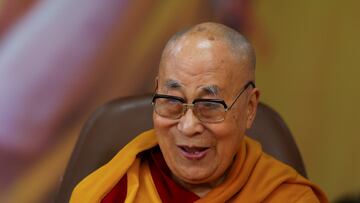Neither 90 nor 110, the Dalai Lama surprises the world with his new life goal, is it possible according to science?
The Dalai Lama has just celebrated his 90th birthday and surprised followers with news he plans to live decades more.


Earlier this month, the Dalai Lama announced that he does plan to reincarnate after previously raising doubts due to ongoing tensions with the Chinese government’s control over Tibet.
But the announcement about reincarnation wasn’t the only headline from the spiritual leader this week. The Dalai Lama also stated that he plans to live until the age of 130, defying what many consider impossible by modern scientific standards. He celebrated his 90th birthday on July 6, 2025.
“I have been able to serve the Buddha dharma and the beings of Tibet so far quite well, and I hope to live over 130 years,” said the Dalai Lama ti a crowd of thousands of followers in Dharamshala, where he has lived for decades.
As of 2025, the longest-lived person is Jeanne Calment, a French woman born in 1875 and died in 1997, who held the record for the longest lifespan.
90th Birthday Message
— Dalai Lama (@DalaiLama) July 5, 2025
On the occasion of my 90th birthday, I understand that well-wishers and friends in many places, including Tibetan communities, are gathering for celebrations. I particularly appreciate the fact that many of you are using the occasion to engage in… pic.twitter.com/bfWjAZ18BO
Historical role of the Dalai Lama
Historically, the Dalai Lama has served as both the spiritual and political leader of Tibet. In 1950, the People’s Republic of China reached a negotiated settlement with Tibetan leaders, granting Tibet a degree of autonomy and allowing the Dalai Lama to retain a leadership role.
The Dalai Lama is selected as a child, with the current leader being appointed in 1940. Declassified CIA documents from the late 1940s describe Tibetan society as a “feudal theocracy,” where “more than 4,000 monasteries own a large proportion of the best land.” Power, the report notes, was “largely in the hands of ecclesiastical officials and aristocratic families.”
The 1959 Rebellion and Exile of the Dalai Lama
In 1959, the Tibetan Rebellion broke out, led in part by members of the Kuomintang (KMT)—the Chinese Nationalist Party that had lost the civil war to Mao Zedong’s Communist forces. According to other CIA documents, the protests were spearheaded by Tibet’s ecclesiastical class and were large in scale, denouncing Beijing’s actions as imperialistic and a threat to Tibetan autonomy. The Dalai Lama eventually fled and settled in Dharamshala, India, a Himalayan town that mirrors Tibet’s mountainous terrain.
Beijing’s justification and control
Beijing has justified its control over Tibet as a means of dismantling the exploitative class system that once used religion to maintain power. Since 1959, the struggle between Tibetan Buddhists led by the Dalai Lama and the Chinese government has continued. In 2007, China passed a law requiring government approval for all Tibetan “living Buddhas.” The government has also stated its intention to appoint its own Dalai Lama, raising concerns about the legitimacy of the reincarnation process.
A future with two Dalai Lamas?
The Dalai Lama has now reaffirmed that the institution will continue, stating that his successor will be chosen according to tradition and recognized by the Gaden Phodrang Trust—his official office in exile. This could lead to the emergence of two rival Dalai Lamas:.
Get your game on! Whether you’re into NFL touchdowns, NBA buzzer-beaters, world-class soccer goals, or MLB home runs, our app has it all. Dive into live coverage, expert insights, breaking news, exclusive videos, and more – plus, stay updated on the latest in current affairs and entertainment. Download now for all-access coverage, right at your fingertips – anytime, anywhere.
Complete your personal details to comment